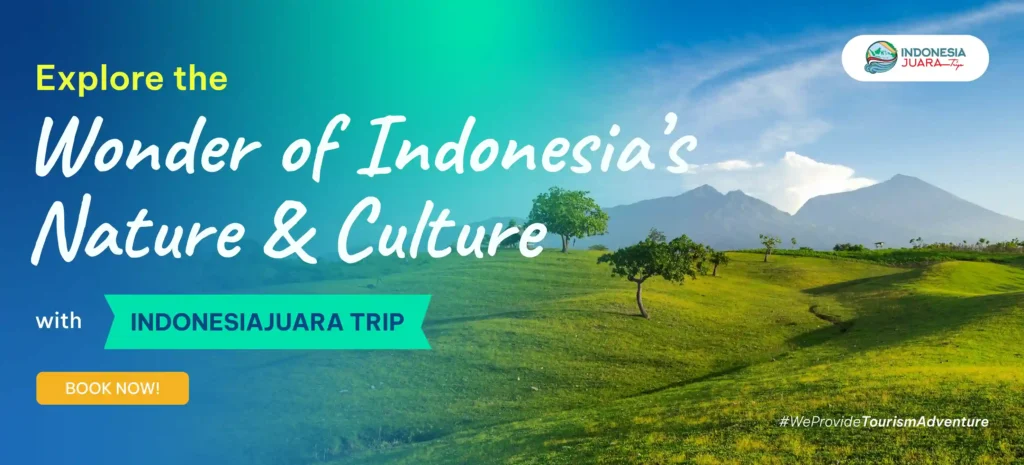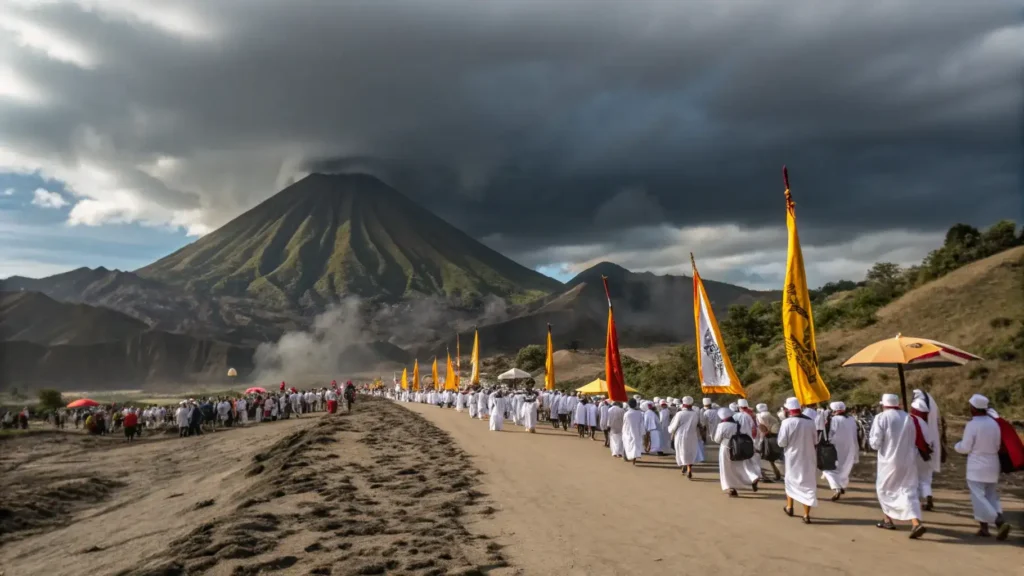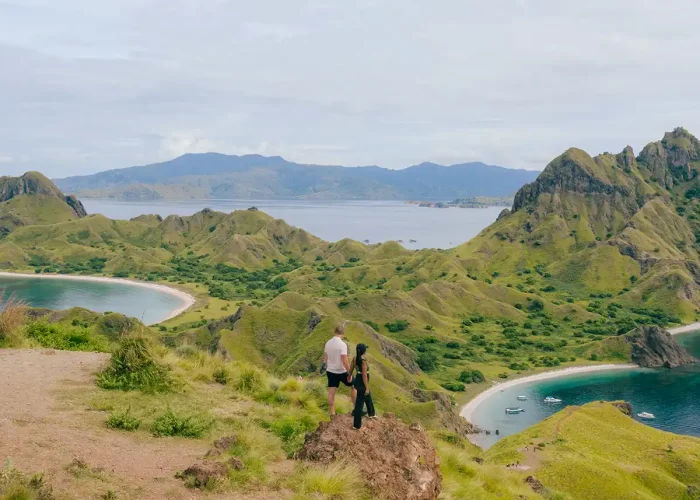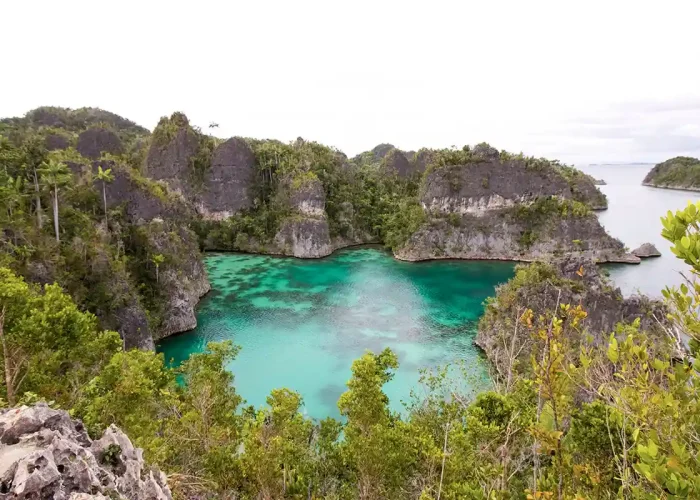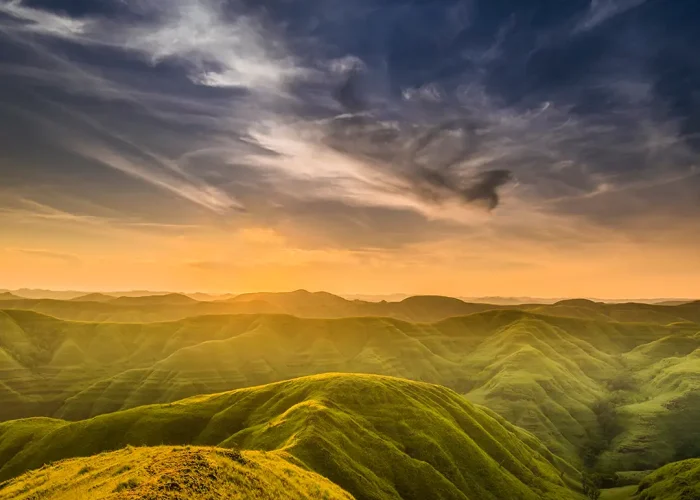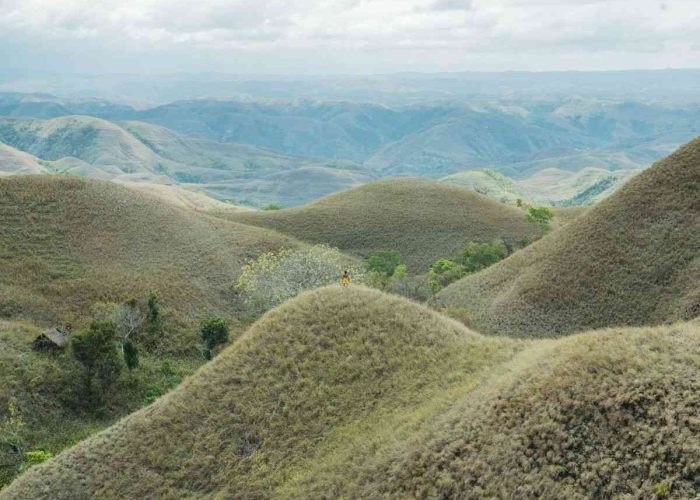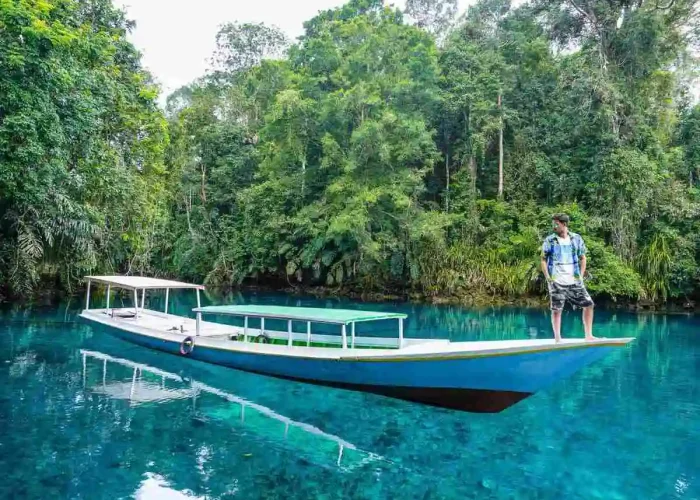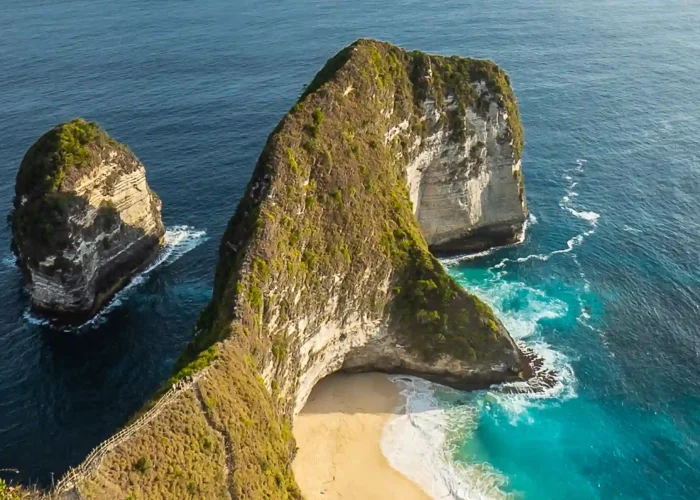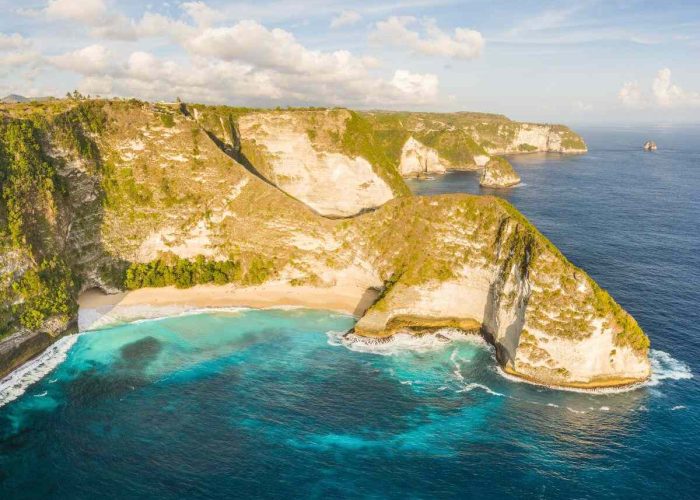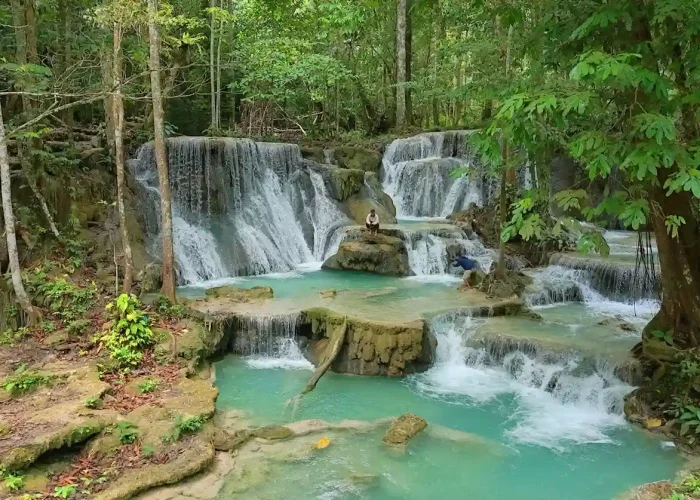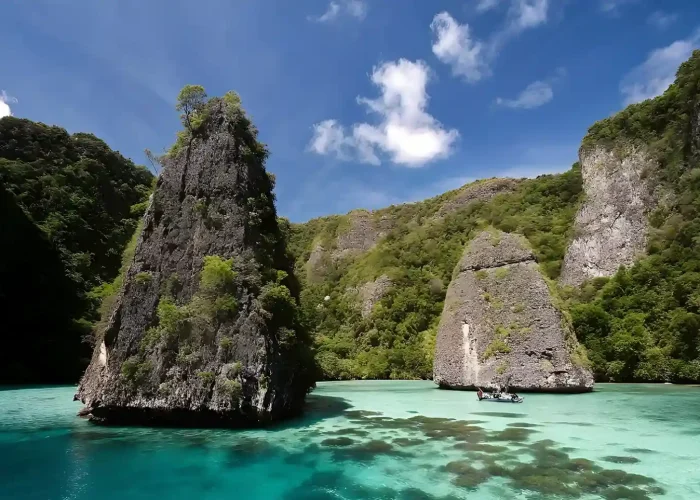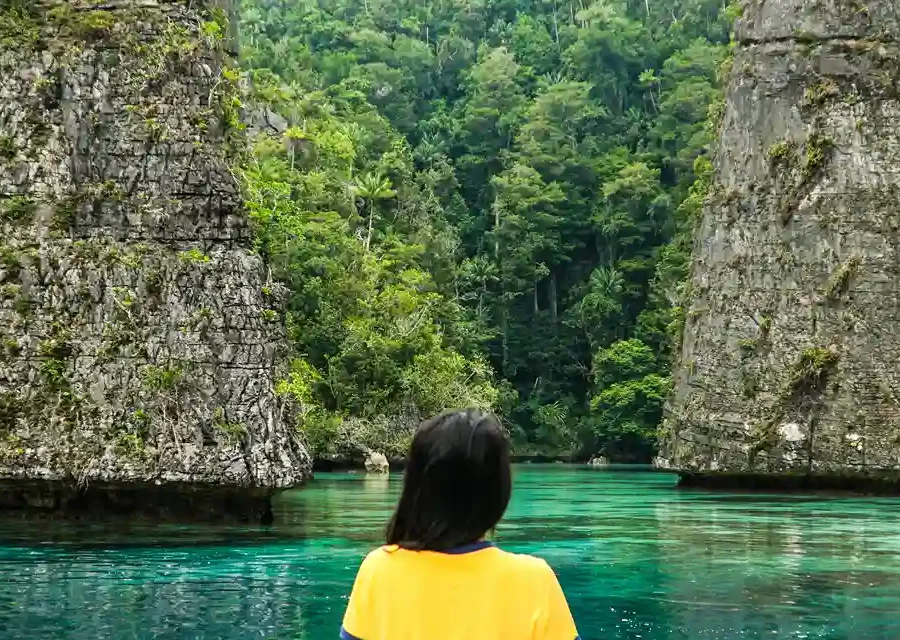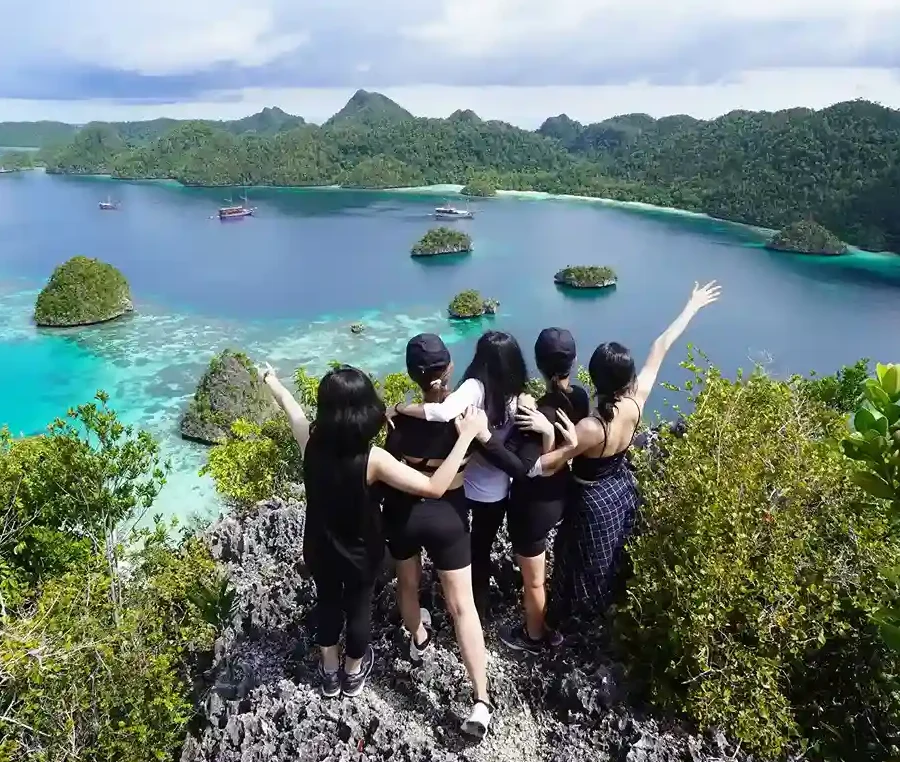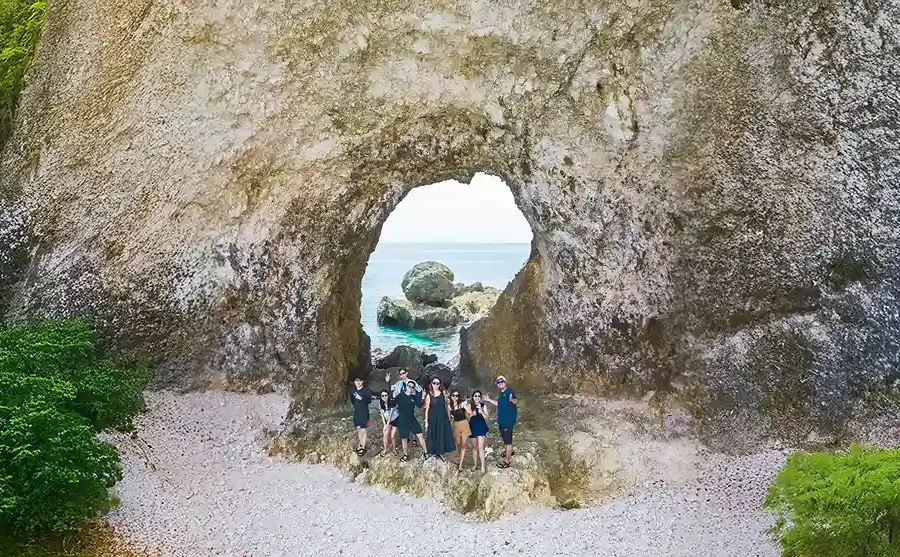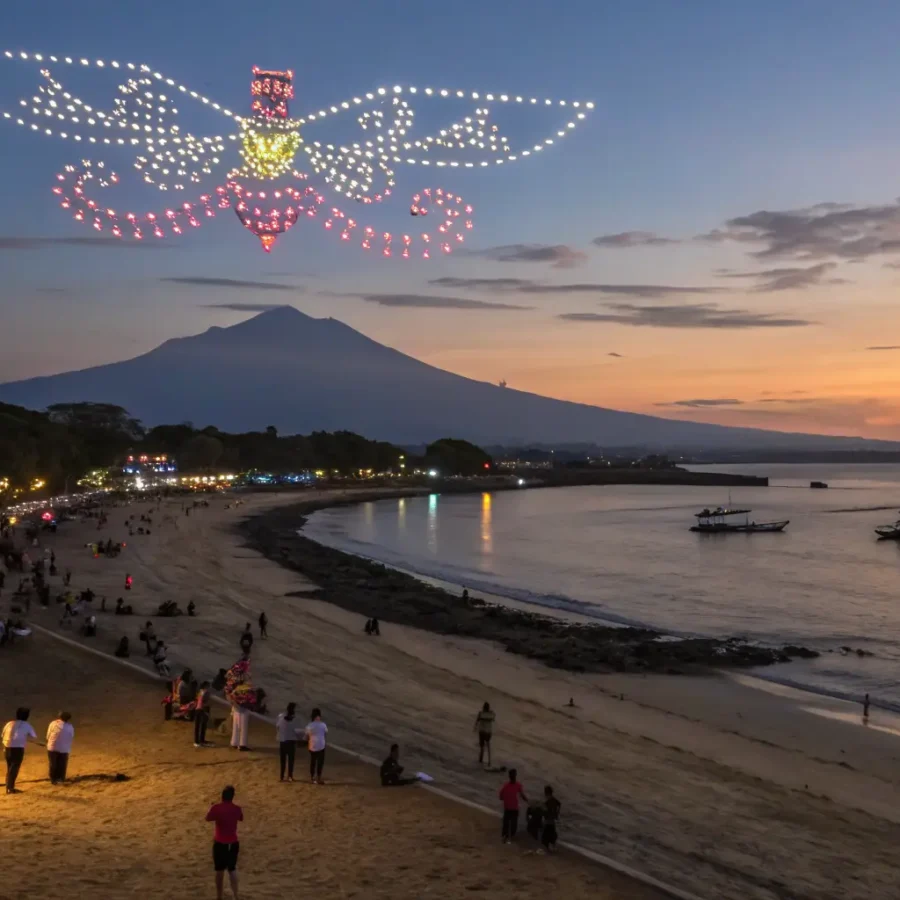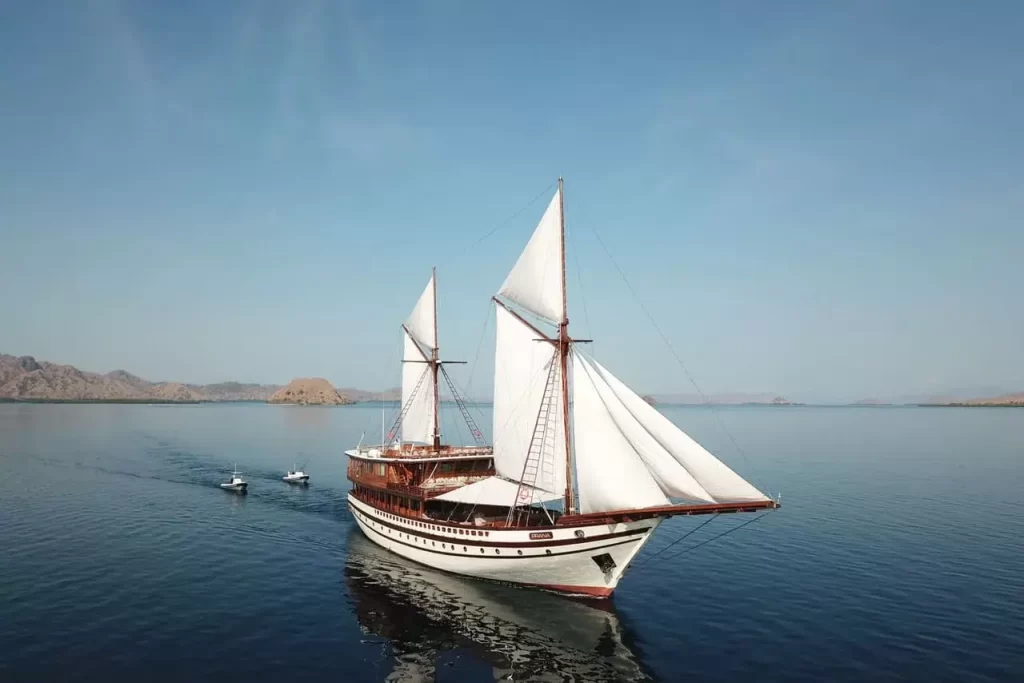When people talk about Mount Bromo, the first thing that often comes to mind is its stunning sunrise or the vast sea of sand. But did you know that beyond this breathtaking landscape lies a cultural tradition that is equally remarkable and rich in spiritual meaning? Yes, the Tengger tribe traditional ceremony is not only a vital part of the local community’s cultural identity but also a powerful attraction for travelers seeking to witness a different side of Bromo. In this article, you’ll dive deeper into the meaning behind the traditional ceremonies of the Tengger tribe. Let’s read through until the end!
Table of Contents
Getting to Know the Tengger Tribe
Before diving further into the Tengger tribe traditional ceremony, it’s important to understand who the people behind these traditions are. The Tengger tribe is an indigenous community living around Mount Bromo, particularly within the Bromo Tengger Semeru National Park. They are spread across several districts such as Probolinggo, Pasuruan, Malang, and Lumajang.
Interestingly, despite being surrounded by the predominantly Muslim Javanese population, the Tenggerese have preserved a unique form of Javanese Hinduism. They practice Hindu teachings infused with strong local influences, blended with animistic beliefs and ancestral worship. Values like simplicity, politeness, and a deep connection to nature form the core of their daily lives.
Warmth and hospitality are also key traits of the Tengger people. Tourists visiting their region are often greeted warmly, especially during ceremonial seasons. This makes the experience of witnessing their traditions feel even more intimate and authentic.
5 Tengger Tribe Traditional Ceremonies
The Tenggerese are known as a community that strongly upholds tradition. Throughout the year, they regularly hold various traditional ceremonies, which are not only religious in nature but also serve as a way to maintain harmony between humans, nature, and spirituality. Here are five important Tengger tribe traditional ceremonies that are still practiced until now:
1. Yadnya Kasada
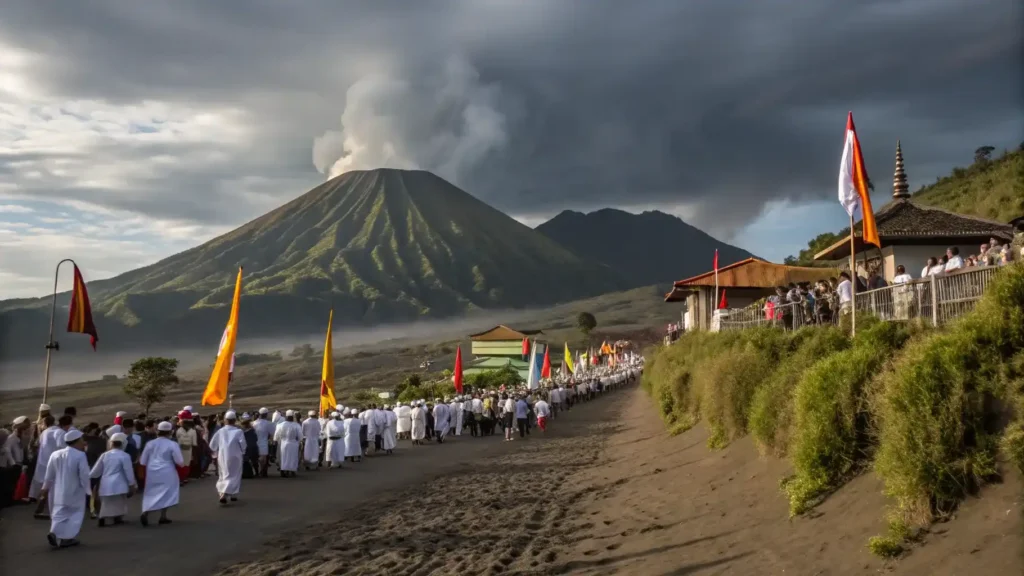
Yadnya Kasada, or more commonly known as Kasodo, is the most iconic traditional ceremony of the Tengger tribe. This ceremony is held annually on the 14th night of the month of Kasada, according to the Tenggerese calendar, at Pura Luhur Poten, which is located right at the foot of Mount Bromo. After a series of prayers and offerings at the temple, villagers carry offerings such as agricultural produce, livestock, and traditional food up to the Bromo crater, where they are thrown into the crater as an offering to Sang Hyang Widhi and their ancestors. This tradition is deeply rooted in Tengger Hindu beliefs and is seen as a form of gratitude and a plea for protection from misfortune. The procession is not only sacred but also draws the attention of both domestic and international tourists every year.
2. Karo Ceremony
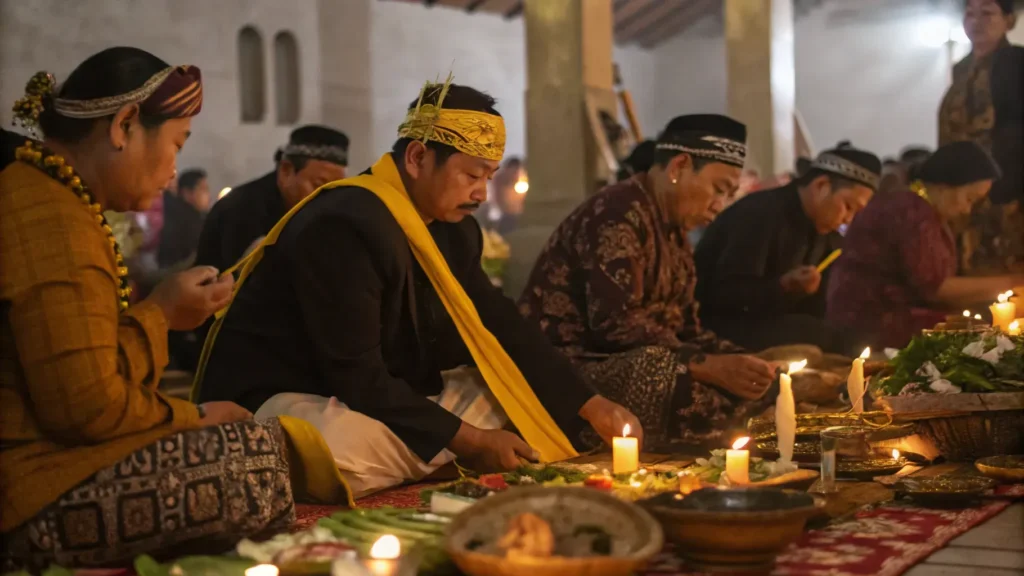
The Karo Ceremony is the New Year celebration for the Tenggerese people, held in the fifth month of their traditional calendar. Uniquely, the Karo Festival lasts for seven consecutive days, with each day carrying its own meaning and specific rituals. During this celebration, the community cleans their houses, prepares traditional dishes, and gathers with family in the sacred kitchen or pawon, which serves as the spiritual center of a traditional Tenggerese home. This ritual also involves offerings to the ancestors and Sang Hyang Widhi as a form of prayer for blessings in the New Year. Karo is also a significant moment to strengthen social bonds and reinforce the local cultural identity.
3. Entas-Entas
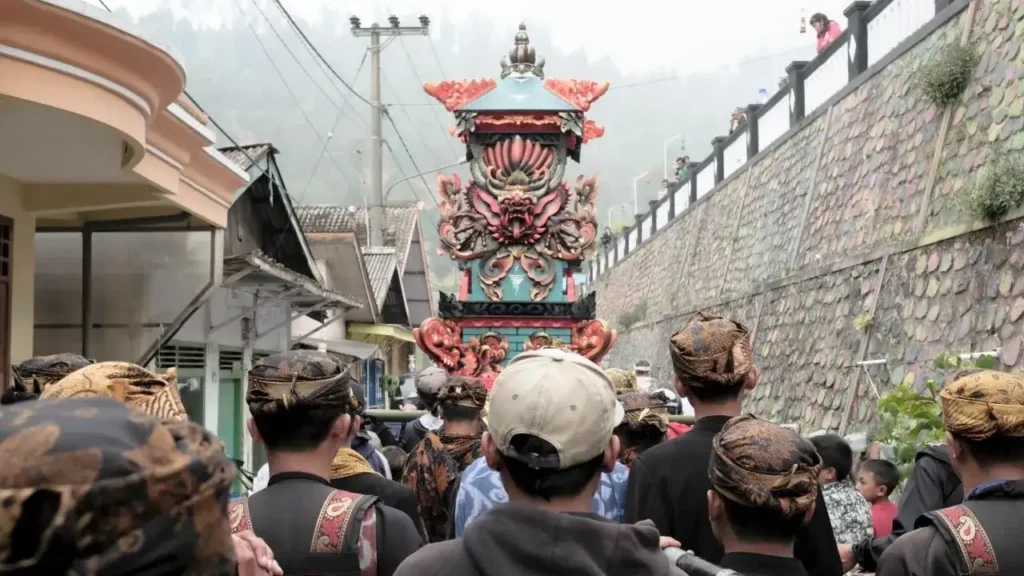
Entas-Entas is a traditional funeral ceremony that marks the final phase of the death procession in the beliefs of the Tenggerese people. This ceremony is performed as a way to release the spirit of the deceased, allowing it to continue its journey to the afterlife and avoid disturbing the worldly realm. Typically, the Entas-Entas ceremony is held several months or even years after the initial burial, depending on the family’s readiness. During the procession, the family conducts prayers, prepares offerings, and performs symbolic rituals such as burning the clothing of the deceased. This tradition holds deep meaning about the relationship between the living and the departed, and emphasizes the importance of maintaining spiritual balance.
4. Wiwit
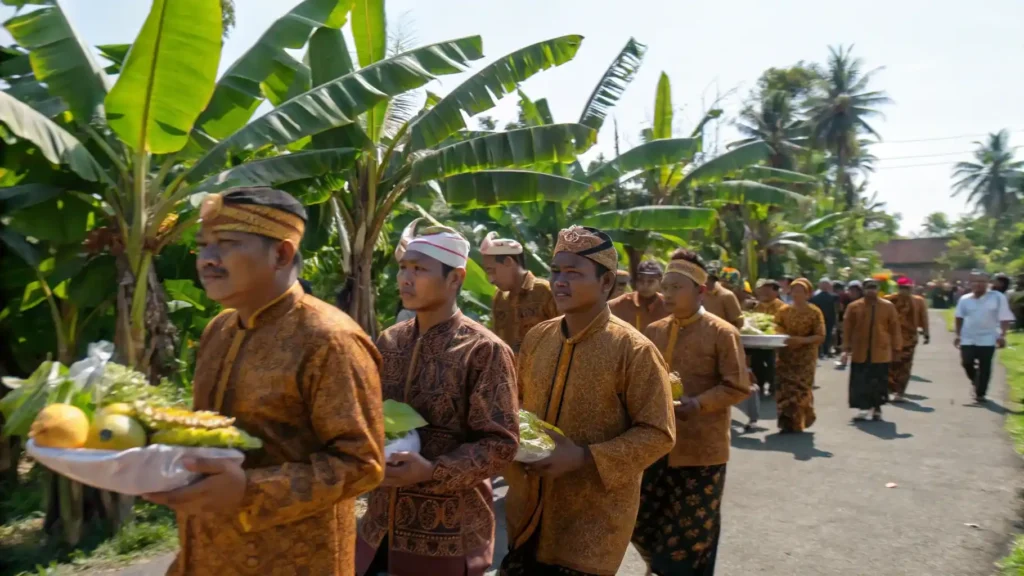
Wiwit is a thanksgiving tradition held before the harvest, reflecting the close relationship between the Tenggerese community and nature. This Tengger tribe traditional ceremony is typically performed when the first crops, such as corn, vegetables, or potatoes, are ready to be harvested. The community gathers on farmlands or in front of their homes, bringing agricultural produce and offering prayers as an expression of gratitude to God and their ancestors. Wiwit serves not only as a spiritual symbol but also as a social event, fostering togetherness among residents and families. This tradition continues to thrive in various Tengger villages, showing that agrarian culture still lives on amid modernity.
5. Unan-Unan
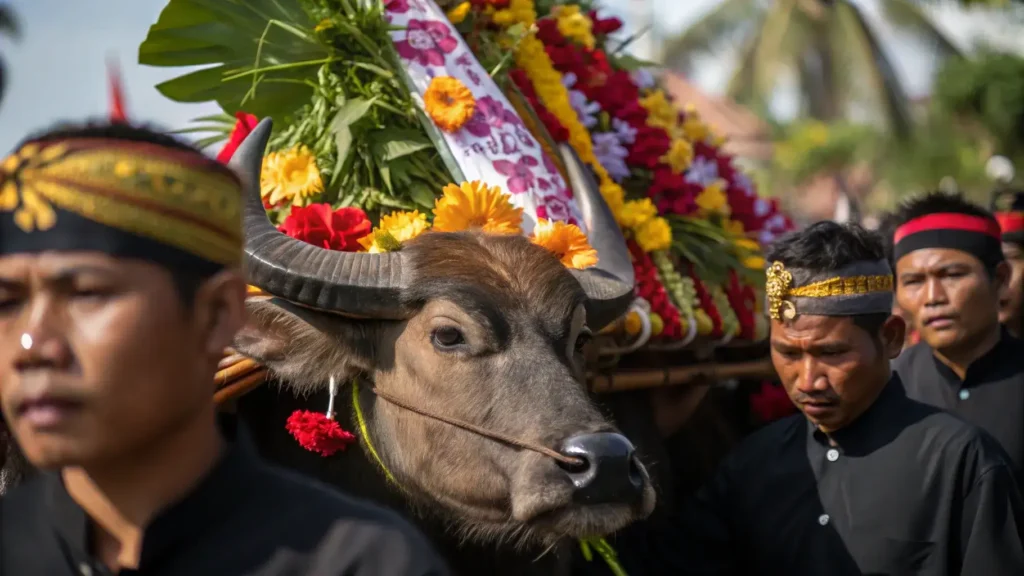
Unan-unan is a major traditional ceremony held periodically, usually once every five years. The purpose of this Tengger tribe traditional ceremony is to cleanse the village of all disturbances, both physical and spiritual. During the event, the entire village takes part in a series of rituals such as temple purification, large-scale offerings, and the sacrifice of livestock as a symbol of warding off misfortune. Beyond its spiritual significance, Unan-unan also features traditional art performances like dance, wayang (shadow puppetry), and Tenggerese gamelan music. This ceremony strengthens community identity while serving as a cultural heritage that enriches the traditional legacy of the Indonesian archipelago.
Read more: How to Get to Bromo from Different Cities: Check the Complete Guide Here
Tips for Witnessing a Tengger Tribe Traditional Ceremony in Bromo
Watching a Tengger tribe traditional ceremony in person can be an incredibly meaningful cultural experience. However, since these ceremonies are sacred, it’s important to prepare yourself properly so you can participate in a way that respects local traditions. Here are a few essential tips to help you do just that:
- Understand the Context of the Ceremony You’re Attending
For example, Yadnya Kasada involves ritual offerings to the crater of Mount Bromo. The Tenggerese believe this offering is a form of gratitude and sacrifice to Sang Hyang Widi. That’s why it’s important to attend not just as a spectator, but as someone who appreciates the spiritual values behind the tradition. Before you go, take some time to read or watch documentation about the ceremony. - Arrive Early
Many ceremonies take place at dawn or in the early morning, especially Kasada. By arriving early, you can observe the ritual preparations, greet local residents, and find the best spot without disrupting the event. You might also want to stay overnight at a homestay in Ngadisari Village or Cemoro Lawang to avoid being rushed. - Dress Appropriately
Avoid wearing revealing, flashy, or overly casual clothing. The Tenggerese people uphold modesty and the sacred nature of their ceremonies. So, dress modestly in closed and neutral-colored clothing. Don’t forget to bring a warm jacket, temperatures in Bromo can be very cold, especially at night. - Be Respectful and Avoid Disrupting the Ritual
If you’d like to take photos or videos, make sure to do so from a respectful distance without interrupting or getting too close to the participants. Avoid using flash, as it can disturb the atmosphere and spiritual focus of the ritual. When in doubt, ask local residents or your guide first. - Use a Trusted Local Guide or Tour Organizer
Attending a tengger tribe traditional ceremony in Bromo will be more meaningful if you’re accompanied by a guide who understands Tengger culture. They can help explain the meaning behind each stage of the ritual and bridge your interaction with local people. - Don’t Leave Trash and Always Respect the Environment
Besides being a sacred site, Bromo is part of a national park that needs to be preserved. Take all your belongings with you, including any trash and avoid damaging plants or walking off designated trails.
By following these tips, you’ll be able to enjoy the sacred moments of a Tengger tribe traditional ceremony in a respectful and memorable way. You won’t just be a tourist, you’ll be a living witness to a culture passed down through generations for hundreds of years.
Explore Traditions and Culture in Indonesia with IndonesiaJuara Trip!
A Tengger tribe traditional ceremony is not just a festive annual tradition, but also a reflection of noble values, spirituality, and harmony between humans and nature. Witnessing it firsthand can give you a new perspective on the way of life of people who stay true to their cultural roots amid the wave of modernization. If you’re interested in discovering more about local cultures in Indonesia, your journey doesn’t have to stop at Bromo. There are still so many other traditions and cultural wonders waiting for you to explore!
You can join a trip with IndonesiaJuara Trip, which not only takes you to the best destinations, but also offers authentic and meaningful cultural experiences. From Labuan Bajo Tour, Sumba Tour, Luwuk Banggai Tour, Misool Tour, Raja Ampat Tour, and Derawan Tour, to Nusa Penida Tour. So, what are you waiting for? Let’s make your dream holiday come true while exploring the cultural richness of Indonesia with IndonesiaJuara Trip!
